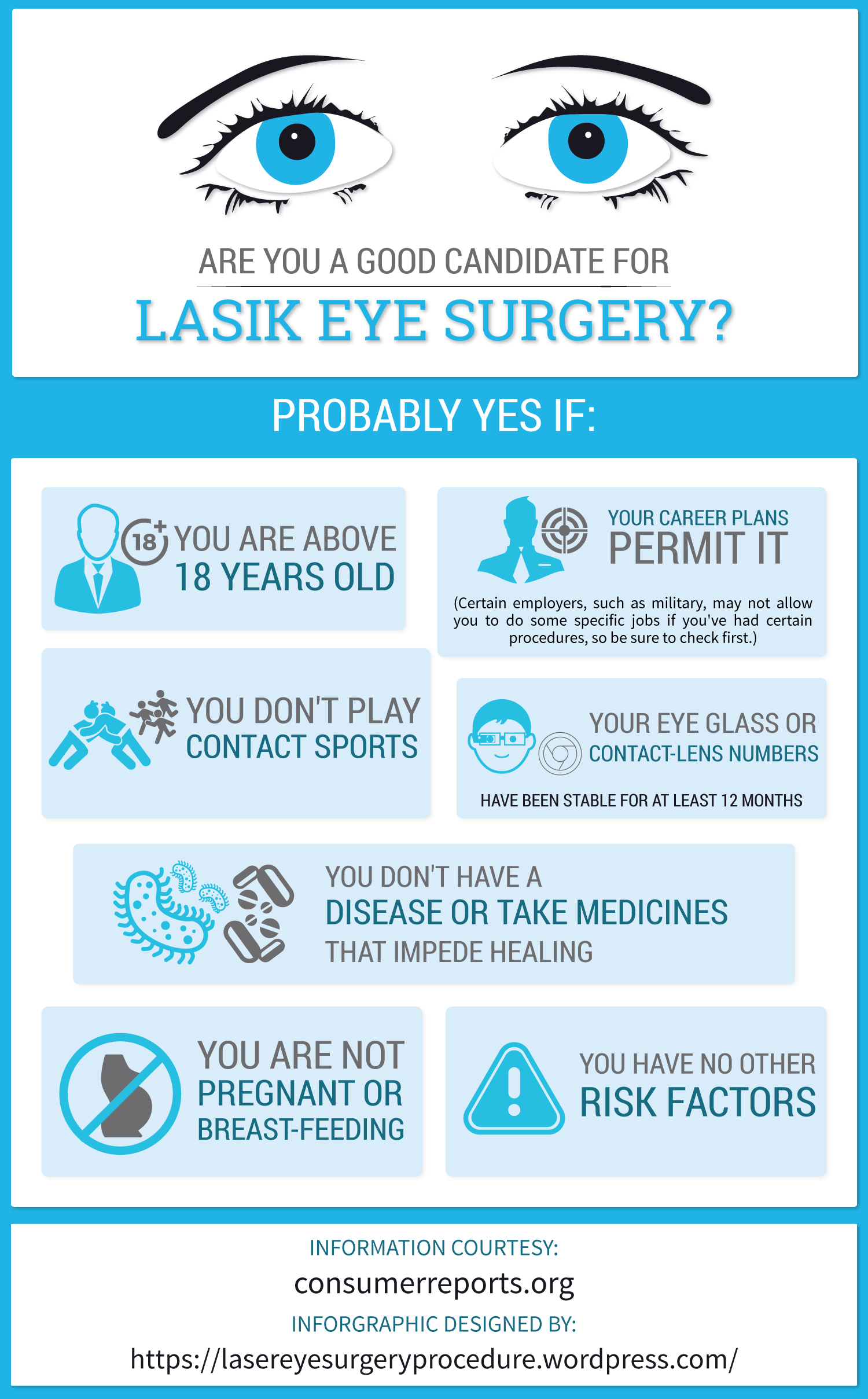Latest Advancements In LASIK Eye Surgical Procedure Innovation

Written by-Nichols Rice
LASIK eye surgery has actually come a long way given that its beginning. The current innovations help in reducing the danger of completely dry eyes, flap complications, and also various other possible side effects such as halos & glow.
As an example, topography-guided LASIK tracks the curvature and characteristics of your cornea to a level not possible with previous modern technology. This allows customization of therapy for phenomenal aesthetic results.
Wavefront Technology
The ability to gauge the eye's wavefront enables doctors to extra specifically explain vision mistakes than typical measurements. This details helps doctors determine a variety of visual problems consisting of higher-order aberrations (ghost pictures and halos).
These newer strategies have actually been revealed to lower the look of these higher-order aberrations after LASIK, hence improving vision. Higher-order aberrations are caused by the means light shows off of your cornea as well as retina. These aberrations have actually additionally been linked to signs like problem driving at night and light sensitivity.
In the "old-fashioned" standard LASIK treatment, the doctor makes use of a mechanical blade called a microkeratome or laser to create a thin hinged flap in the cornea. This flap is folded up back exposing the cornea's middle section called the stroma. Pulses from a laser after that shape the corneal surface area. This newer iDesign innovation takes the traditional LASIK procedure further. By combining Wavefront modern technology with topography (the surges and dips on the cornea's surface) information, it creates a tailored medical program to direct the laser during your treatment.
Femtosecond Lasers
Femtosecond laser technology makes use of exceptionally brief laser pulses to accomplish high power density with extremely little effect on eye tissues. This permits the surgeon to carry out fragile laser reducing procedures within the eye without having to open up or mechanically enter the eye.
When a femtosecond laser is made use of to create a corneal flap, it offers determine precision and also security unrivaled by microkeratome blades. Throughout Nearsightedness (Myopia) -Laser LASIK, the flap is created utilizing laser energy to stay clear of any problems that may accompany typical mechanical devices.
During this section of the surgery, your physician will use the AMO IntraLase Femtosecond Laser to carefully divide your corneal epithelium tissue and produce a flap in the front of your eye. After the flap is developed, an excimer laser will certainly after that use ultraviolet light to reshape your cornea. This reshaping of the cornea modifications just how light travel through your eye and also deals with refractive mistakes. The flap is after that enabled to recover normally.
Excimer Lasers
Excimer lasers release trendy beams of ultraviolet light that reshape the cornea (the clear front part of the eye) to correct refractive errors, such as nearsightedness, farsightedness as well as astigmatism. They do so without shedding or literally eliminating the tissue.
The laser eliminates microscopic quantities of tissue, just 0.25 microns at once (one micron is a thousandth of a millimeter). These ultra-thin layers of tissue are precisely eliminated to fix the error in your vision.
To do this, the cosmetic surgeon produces a flap on the surface of your cornea making use of one more kind of laser (femtosecond laser). The flap is then peeled off back, and also the excimer laser is utilized to reshape the cornea. When check it out is finished, the surgeon changes the flap as well as it will normally secure right into location.
Monovision
Coastal Vision Medical Team uses Monovision with Customized All-Laser LASIK for patients that desire to reduce their dependency on call lenses or spectacles. This specialized method enables presbyopic individuals to achieve great distance and also near vision without the need for rehabilitative glasses or get in touches with. The treatment involves synthetically remedying one eye (generally the leading eye) for distance vision while leaving the various other eye a little nearsighted. The mind naturally selects the eye with the sharpest image for close-up work and also suppresses the info coming from the a little unfocused other eye.
This therapy is excellent for patients over the age of 40 that are beginning to experience presbyopia, a condition that creates the gradual loss of close-up vision that requires reading glasses. However, it is necessary to talk about every one of your alternatives with a LASIK specialist who has considerable experience in treating presbyopia and will certainly help you identify if this refractive solution is right for you. It is also feasible to attain monovision with dental implanted intraocular lenses or cataract surgery.

